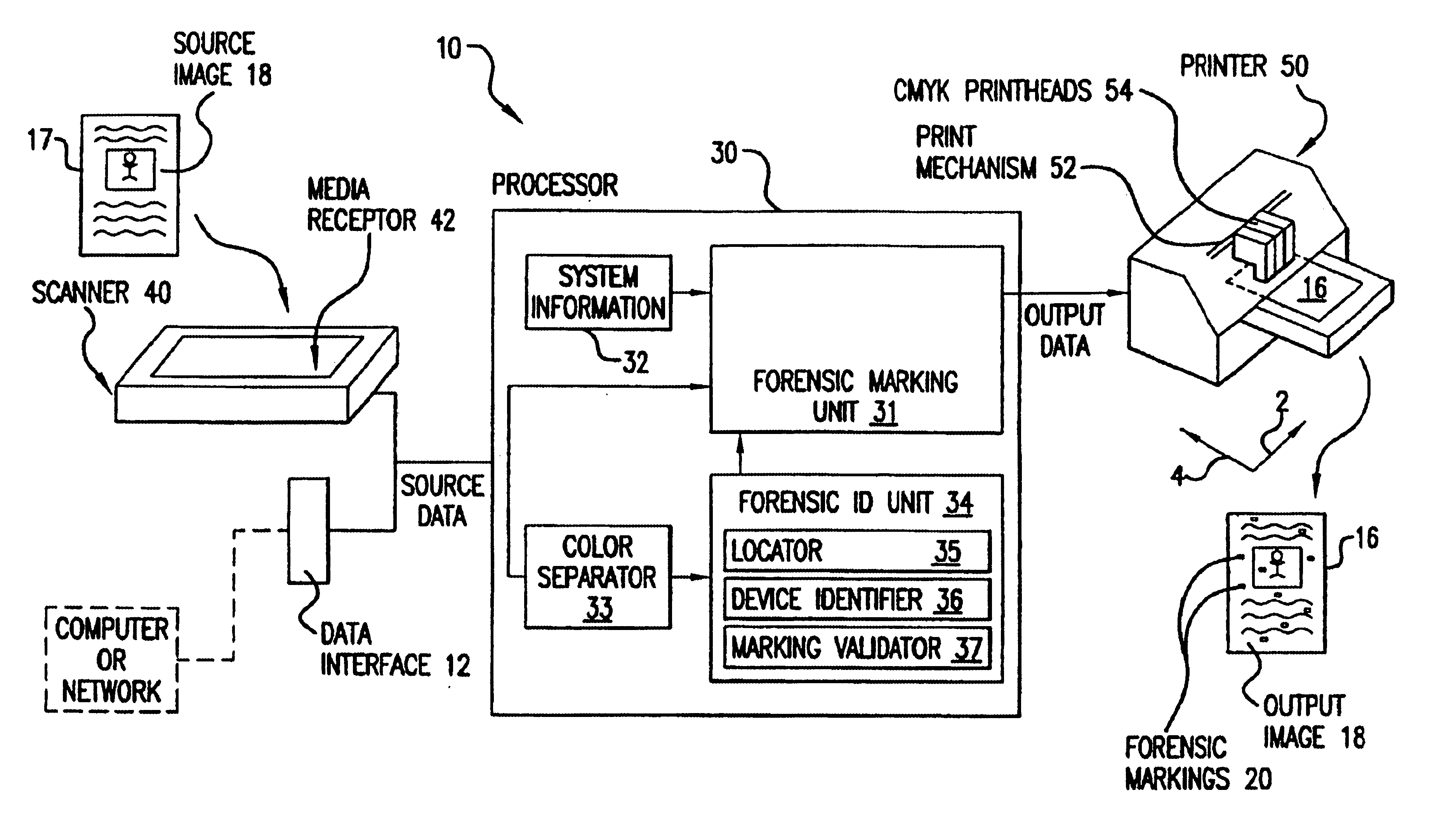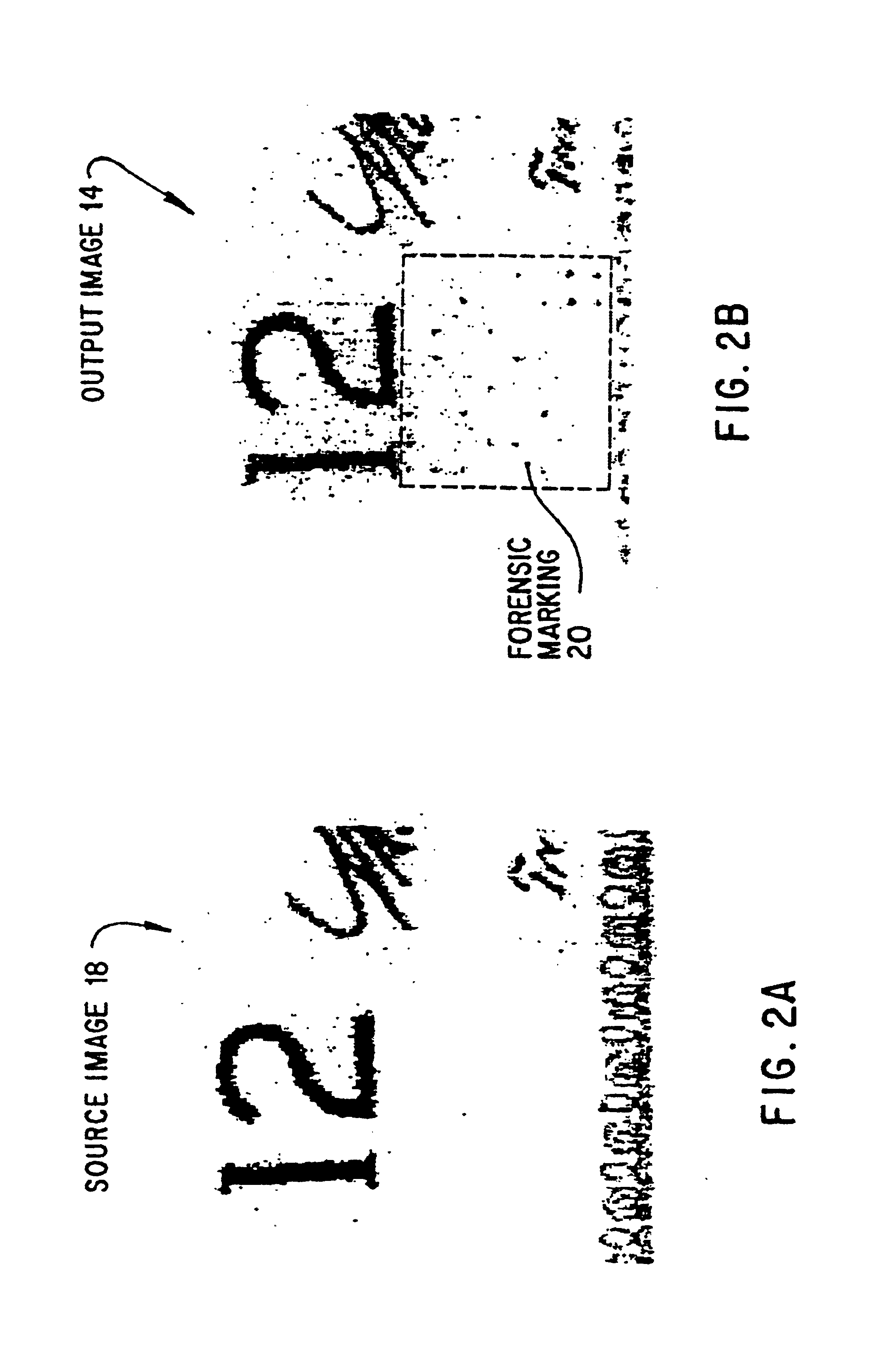High reliability forensic color marking system
a color printing system and high reliability technology, applied in the field of color printing systems, can solve the problems of difficult to distinguish from the original, high cost, and undesired copying of proprietary or confidential business documents, and achieve the effect of high degree of accuracy
- Summary
- Abstract
- Description
- Claims
- Application Information
AI Technical Summary
Benefits of technology
Problems solved by technology
Method used
Image
Examples
Embodiment Construction
[0026]Referring now to the drawings, and more particularly to FIGS. 1, 2A, and 2B, there is illustrated a passive marking printing system 10 constructed in accordance with the present invention which adds to output images 14 printed on a medium 16 encoded forensic markings 20 capable of identifying the printing system 10. The system 10 advantageously minimizes the impact of these forensic markings 20 on print quality by marking the printed medium 16 with a small amount of imperceptible information overlaid on the image content, while ensuring that the system 10 that produced the printed medium 16 can be identified with a high degree of accuracy from the forensic markings 20 on the printed medium 16.
[0027]A preferred embodiment of the printing system 10 includes a processor 30 for superimposing onto source data at least one forensic marking 20 having an encoded pattern of image pixels in graphical form so as to create output data corresponding to the forensically marked output image ...
PUM
 Login to View More
Login to View More Abstract
Description
Claims
Application Information
 Login to View More
Login to View More - R&D
- Intellectual Property
- Life Sciences
- Materials
- Tech Scout
- Unparalleled Data Quality
- Higher Quality Content
- 60% Fewer Hallucinations
Browse by: Latest US Patents, China's latest patents, Technical Efficacy Thesaurus, Application Domain, Technology Topic, Popular Technical Reports.
© 2025 PatSnap. All rights reserved.Legal|Privacy policy|Modern Slavery Act Transparency Statement|Sitemap|About US| Contact US: help@patsnap.com



